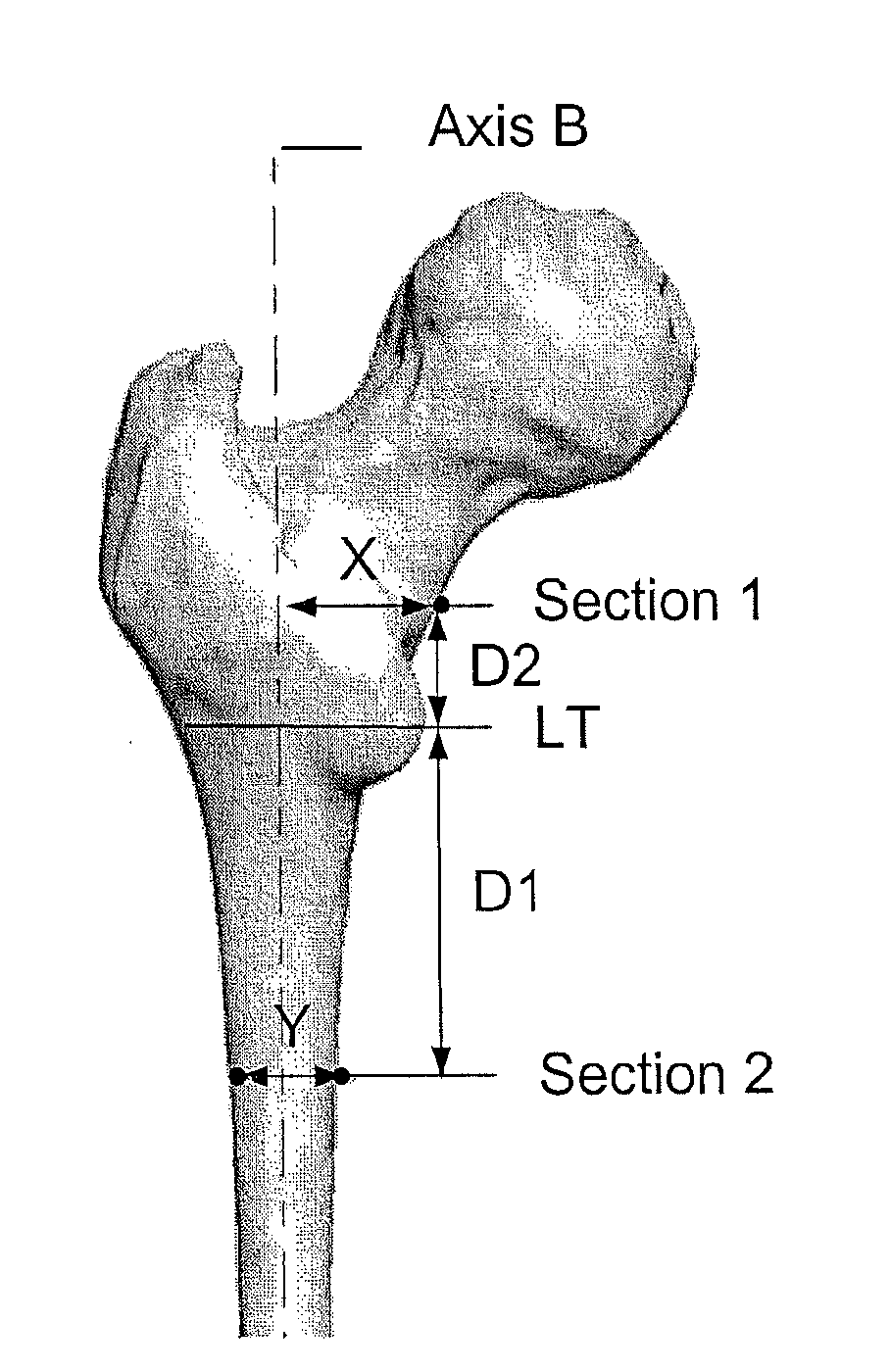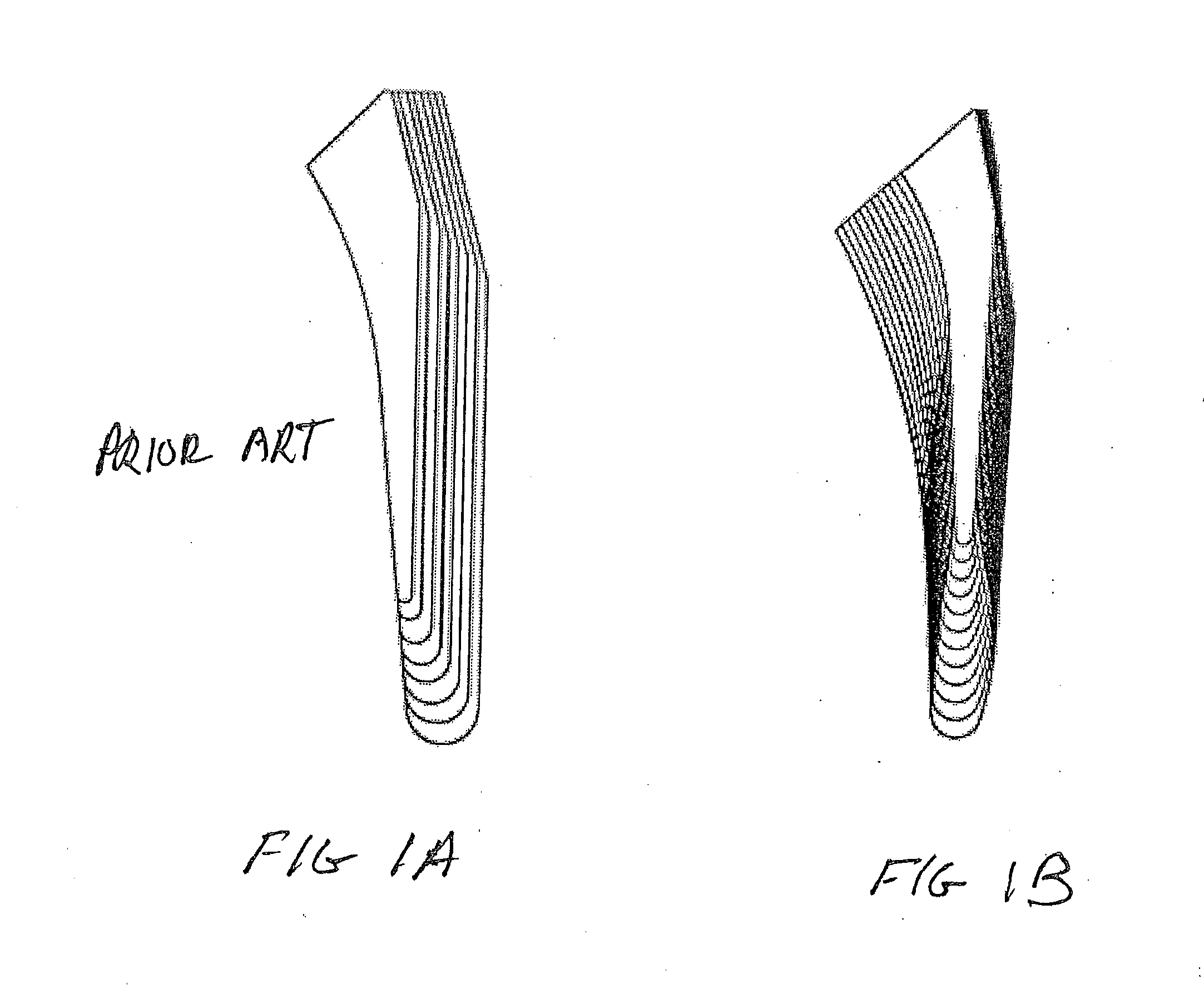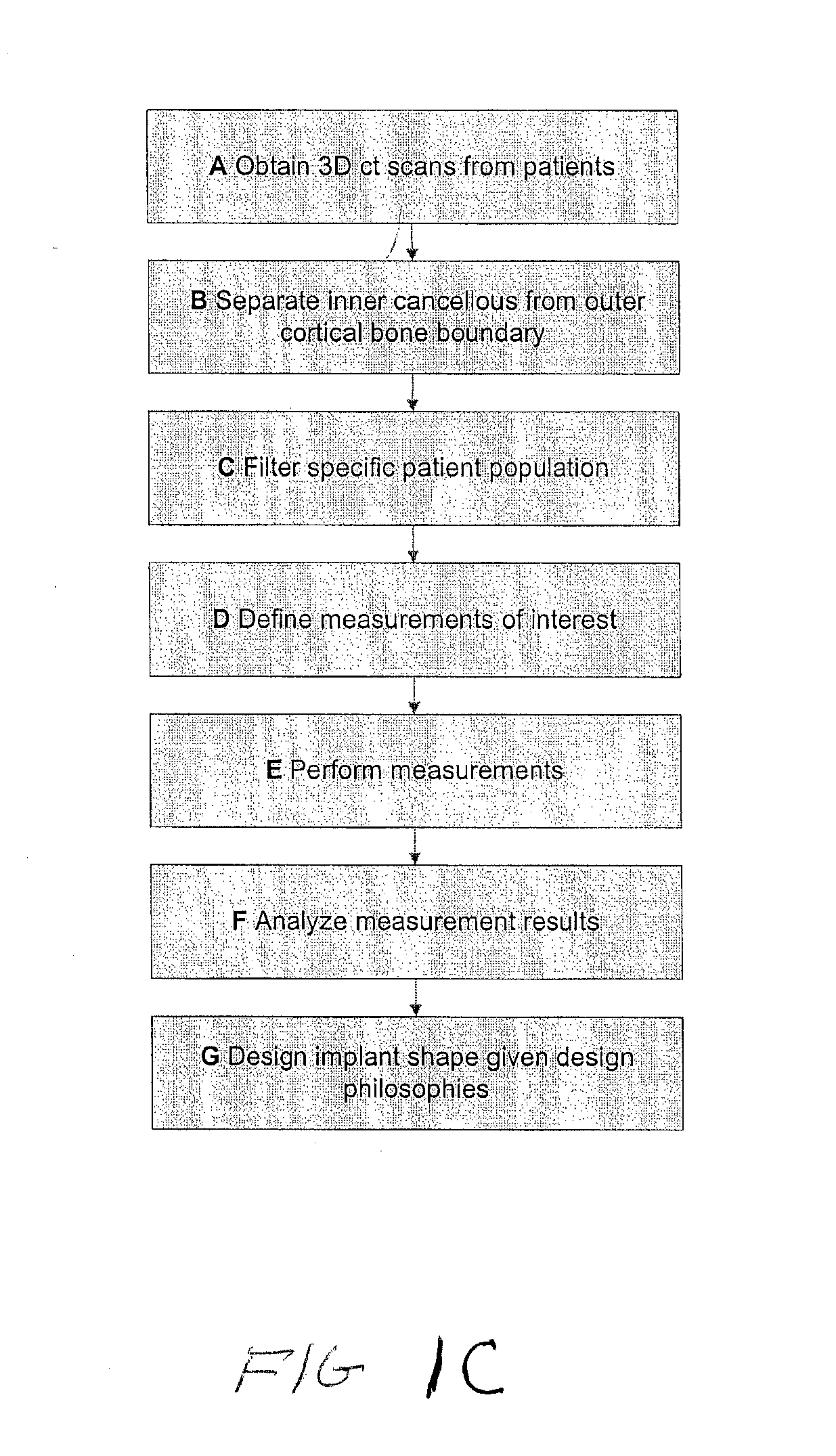Method for designing a bone morphology based hip system
a hip system and hip technology, applied in the field of hip system design, can solve the problems of typical implant system growth not accurately reflecting the geometries of different bone sizes, inability to develop a new hip system design, and inability to use bone morphology data for new implant designs, etc., to achieve the effect of improving the shape of the hip stem design
- Summary
- Abstract
- Description
- Claims
- Application Information
AI Technical Summary
Benefits of technology
Problems solved by technology
Method used
Image
Examples
example
[0077]Five stems of the prior art (STD) tapered wedge design similar to FIG. 1 (Accolade® TMZF, Stryker Orthopaedics, Mahwah, N.J.) and the stem of the present invention were implanted into a homogenous set of 10 synthetic femora utilizing large left fourth generation composite femurs (purchased from Sawbones, Pacific Labs, Seattle, Wash.).
[0078]The six-degrees-of-freedom (6 DoF) motions of the implanted stems were recorded under short-cycle stair-climbing loads similar to a previous study of press-fit stems.
[0079]Minimum head load was 0.15 kN and the maximum varied between 3 Body Weights (BW) and 6 BW. Loading began with 100-cycles of 3 BW and was stepped up to 4 BW, 5 BW and 6 BW for 50-cycles each. Prior to each load increase, 50 cycles of 3 BW loading was applied. This strategy allowed a repeatable measure of cyclic stability after each higher load was applied.
[0080]The 6 DoF micromotion data, acquired during the repeated 3 BW loading segments, were reduced to four outcome measu...
PUM
 Login to View More
Login to View More Abstract
Description
Claims
Application Information
 Login to View More
Login to View More - R&D
- Intellectual Property
- Life Sciences
- Materials
- Tech Scout
- Unparalleled Data Quality
- Higher Quality Content
- 60% Fewer Hallucinations
Browse by: Latest US Patents, China's latest patents, Technical Efficacy Thesaurus, Application Domain, Technology Topic, Popular Technical Reports.
© 2025 PatSnap. All rights reserved.Legal|Privacy policy|Modern Slavery Act Transparency Statement|Sitemap|About US| Contact US: help@patsnap.com



